Cover photo: Clayton Boyd (@_ClaytonBoyd_)
Tom Wallisch has come a long way since winning Superunknown IV back in 2007. The “King of Afterbang” has just kept on innovating in the 12 years since that game-changing video. He sits down, for an extended interview, to talk about everything from how he got started to how skiing has changed throughout his career, with so much in between. The 31-year-old is now a veteran of Newschool skiing and he talks a lot of sense about some of the biggest issues in our sport.
“I guess because the hills were so small and I was in a city where there would be snow on the ground for a couple of weeks of the year, that’s where the motivation to go and hit a rail came from.”
The Pretzel man was born and raised in Pittsburgh, hardly a ski town. He explains that the nearest full-size hill, with lift op and everything, was an hour away from his house.
“Seven Springs, which nowadays has a really sick park, is only 600 vertical feet with probably only 20 trails. It’s really just a hill, not really a mountain. They’ve now got a great park scene, but it was always at least somewhere for me to ski.”
Tom loved skiing though, so he was desperate to find a way to practice the sport without pristine hills and fresh powder…
“I saw skateboarders, snowboarders and other sports doing railslides. As soon as I saw a rail in the city park I thought ‘this is kind of the next step. If I slide down this hill I wonder if I can do a railslide?’ That’s where my original motivation to try urban skiing came from.
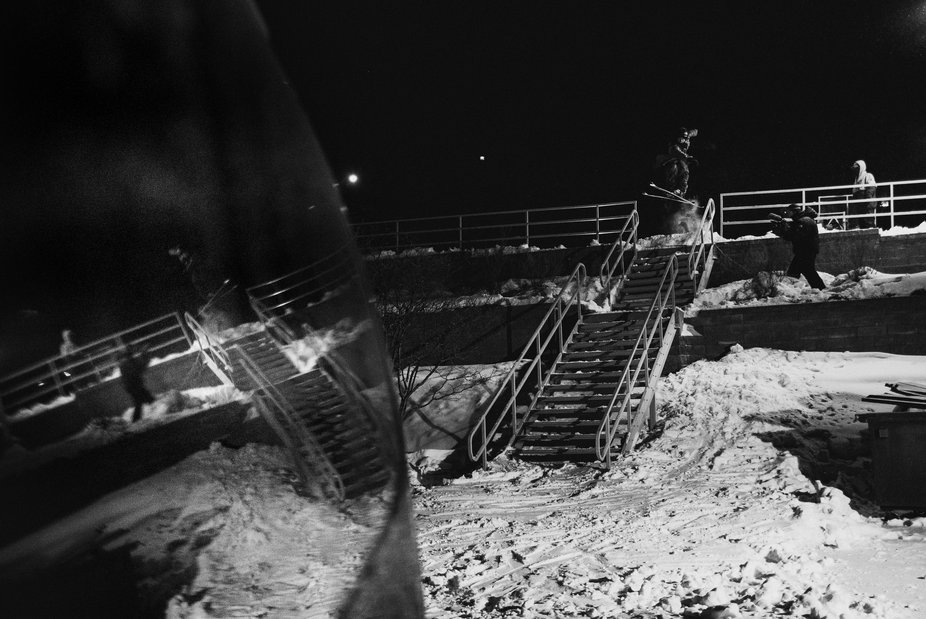
Photo: Clayton Boyd (@_ClaytonBoyd_)
_
“It was mostly other sports that gave me inspiration, but I had seen some of the first Poorboyz and Level 1 movies, like Strike 3 with Dave Crichton. I had seen urban skiing, so I knew it wasn’t just a snowboard thing, skiers could do railslides. There was no one in the area, I was definitely the only person in the city that was doing that, but I had seen DVDs to kind of lead me on.”
“As a kid in Pittsburgh there were no skiers, no ski media, no competitions and no way to get noticed. I had always seen the Level 1 video contest as a path towards becoming a pro skier.”
“It was literally ‘Super Unknown’. It was supposed to be someone that was not known, from some random place who gets known from the video. I knew that if I could make a good video then I could get some recognition. I had thought about entering for years, but I’d never had enough good footage.
“The season I moved out to Utah and started going to college, there was a whole crew that was filming and editing; the 4Bi9 crew. So I was able to film for a couple of months and get a whole video together. That was definitely the spark that started my career. Not even necessarily, winning the contest. Just the exposure, the comments and the feedback from the video itself, gave me the motivation I needed. Every other feedback was like ‘You’re great! Holy sh*t!’ I didn’t think I was that good, but people were telling me like ‘that was the craziest rail ski trick I’ve ever seen! You should be skiing for someone, you should be competing…’ it was the motivation to think maybe I am ok, a confidence builder more than anything to push myself, try harder and see where I could take it.
“I would say that segment was still in the top two or three in my career so far. I’m really in love with ‘The Wallisch Project’ video I got to do, a full season just focusing on me doing every aspect of the sport. That’s probably the highlight video. Superunknown, for what it was, how much fun it was to create and the awareness I got from within the ski industry, that’s probably number two. Those are definitely my two favorite projects.”
https://www.youtube.com/watch?v=1Q2DV5sXDh4
_
“I spent a lot of years filming with whoever would have me. I loved the film making aspect of everything and the idea behind Good Company was to get more involved.”
T-Wall has undoubtedly been one of the most popular skiers on film; Superunknown, edits or full movies, everyone wants to watch him ski. So it’s only natural that he was involved in starting a production company of his own:
“Instead of being told what trips I could go on or when I could go, I wanted to own more of it and be more involved in chasing the snowfalls, planning the trips, deciding where to go, what to do, what the movie would be made up of, who’s in the movie, what songs we use, everything from the ground up. I loved filming with Level 1, I filmed with Field productions in Norway, I filmed with TGR and all these different companies.
“We created Good Company with Kyle Decker and AJ Dakoulas just to have an outlet for our own ski stuff. Just to make our own project, the way we wanted and to have more of a hand on it. I just loved that whole aspect of it, I could ski with the skiers I liked best, film with the filmers I liked best and just continue making ski films instead of doing it for someone else.
“Sometimes there was someone on a trip you had never met before, but now, every trip I go on, these are my best friends. I’m literally in good company and that makes it that much more enjoyable to travel the world. I mean we weren’t that clever, we just knew we needed a name for the production company and the whole idea behind it was we were going to be in good company all year because these are the people we want to hang out with. Not incredibly deep or clever, but I think it works.
These last 4 years have been the best I’ve had filming. Working with the crew of skiers and filmers that I really like hanging out with.”
“My biggest advice to kids is to go on NS and make friends at their local hill, don’t just ski with the same people. Find kids that are like minded and trying to improve.”
Tom Wallisch is obviously a skiing legend, but once upon a time he would have been like many of you, he might even have been reading an interview with one of HIS ski heroes, so who better to get advice from?
“What helped me the most wasn’t really where I skied or what kind of skiing I did, it was the people I skied with. The years that I learned, improved and made the biggest difference for me, career-wise and making it as a pro skier, were the years I spent with the 4BI9 crew, a bunch of close friends who were all extremely talented and all pushed me to be a better skier and to have more fun.
“There’s so much to be said about what you can accomplish on the hill if you stay a couple hours longer because you’re still having fun with friends who are encouraging you to try something new and do this that or the other thing.
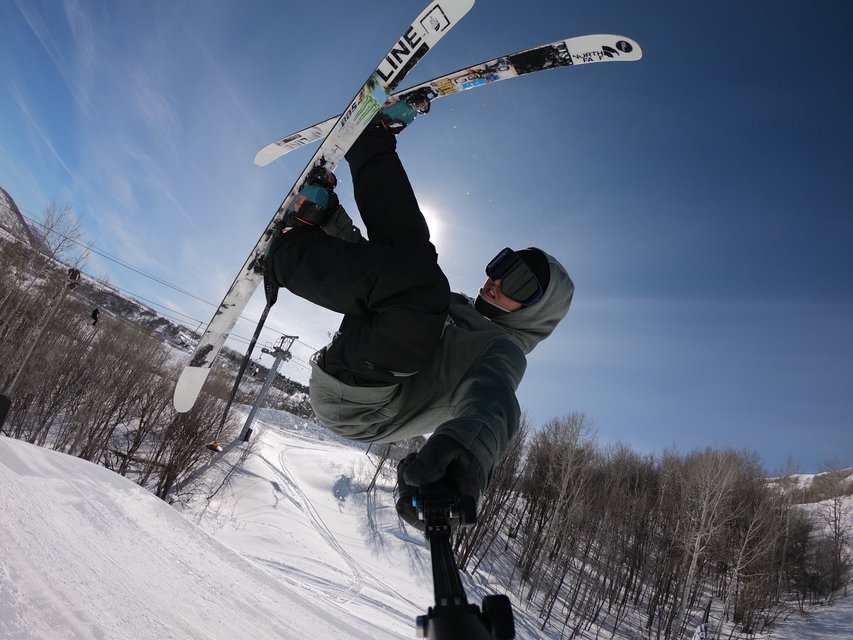
“The one day that you might not be having the best day, your buddy might be having a great day and you’ll be motivated to stay when you might have left. It’s really all about the community. Having the right people around you and having a love for the sport is how people make it. You’re not going to make it just by trampolining, hitting the water ramps and airbagging every day, trying to learn the latest double cork. It’s the guy that stays a bit longer every day because he or she’s having fun doing it. Finding a crew is my biggest tip.”
“As kids we were motivated by hip hop, rap and that type of music. That’s where all the ridiculous slang, the baggy clothes and tall tees came from.”
“The tongues on my Full Tilts was inspired by a high-top sneaker, it grew to look more like a hockey skate but it was all inspired by hip-hop and rap. It was always just funny, something that was made fun of by the older generation ‘Oh look at these idiot kids!’ It was just a way to be different, no one wants to dress or act the same way as the people that came before them. You want to be funny, different and unique. I think you still see that. Maybe kids aren’t wearing tall tees but now they’re wearing non-waterproof Adidas tracksuits or a fanny pack, whatever the weirdest thing they can wear, just to be different. Everyone wants to be their own person and it was just a style thing for us.”
“The first twin tips I ever bought, back in 2001, were LINE Ghetto Blasters and then 1260s so it was like a coming home party for me.”
“I can’t say enough good things about the people at Line. I was in kind of a weird place, I’d been on Scott for a while, I was there head to toe and I was changing sponsors for goggles and helmets anyway. The skis were great, I liked skiing on Scott skis, but I didn’t really have the freedom to get creative and come up with new ideas.
“My biggest rationale for coming to Line was that I have always been inspired by Eric Pollard and his ability to come up with a new ski design every year, make it, create it and sell it. Something new for himself to ride, I wanted to design skis, I wanted to make an edgeless ski that I could grind aluminium rails on. ‘A ski that’s so soft that I can do this or this shape that I can do this trick.’ The whole motivation for me was to get on a brand that’d let me create whatever I wanted. Whether or not it sold, I wanted to try new things, I wanted to prototype, create and generate new ideas.
“So that was the motivation but also it’s just a cool company, I’d seen guys like Eric and then guys like Will Wesson and Andy Parry, doing literally whatever they wanted on the skis and having fun. It was just a cool culture and cool company. “
“The biggest changes I’ve seen throughout my career are; one in terms of competition and one in terms of filming.”
“In filming, obviously the introduction of social media and the quickness of media consumption has been a dramatic change. It’s sad, to me, that the ski movie HAS died there really isn’t a place for a full-length ski movie every season. Instagram, Facebook, and social media have kind of killed off the idea of filming full segments and a full movie. Spending a lot of time and money to film a ski movie.
“That’s sad to me but also cool. I love how a kid, like I was on the East coast, can just film really cool tricks for Instagram, upload them every day, stack followers and eventually become a pro skier based solely on the fact that they do cool tricks on their home mountain. I think that’s the most amazing part of all of it, but it is a bit sad that ski production companies are now filming shorter form stuff.
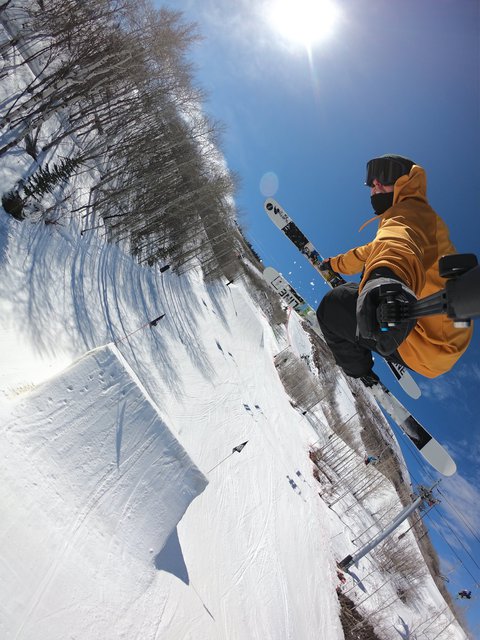
“When we originally started Good Company we released videos throughout the season trying to keep up with the speed of social media. Then we tried other things, made a full ski movie, and now we’re doing all free online releases.
"The best part about Good Company is that we can continue to shift and change and try different things. It’s more fun for us that way and also allows us to hopefully keep up with the times.
"In terms of competition, the biggest change has been in that when I competed and traveled, I did it with Australian, Canadians and Swiss guys we were all traveling and staying together. There were no were no national teams, we were all together. You’d meet people from different countries, becoming best friends with people from different countries.
"Nowadays everyone’s on their national teams and hang out with their national coaches, teammates, and physios. There’s not the same freeski comradery, everybody’s friends but you’re not hitting you’re buddy up to see if he wants to room together. You’re just staying wherever you’re told to stay. I used to call Russ Henshaw, my buddy from Australia, ask him where he was staying for European X Games, ‘Oh let’s get a place together and hang out.’ That whole comradery with people from different countries just doesn’t exist anymore.
"Both those things are kind of sad but it opens up the door for more coaches and more people to have jobs in freeskiing. The film stuff is cool, I love social media but it’s sad to see the ski movie passing away."
“Jumping off buildings and skiing urban is just not good on the body at all, but I’ve always wanted to do more backcountry stuff.”
"Every year I just seem to get pigeon-holed into the guy that does the park and urban. A video will come up, I’m not made to do it but it’s a really cool opportunity. I’ll talk to the Sherpas guys and they’ll plan out the Imagination video. Doing that takes a month-and-a-half of the season and there’s not enough time to ski as much backcountry as I would have liked. So it’s just a matter of me just wanting to explore something else. I’ve done so many trips to grind rails all over the world, I’m not bored of it but I just want to try something else. Hopefully, it will be a bit easier on my knees, but more than anything, it’s exploring a new ski realm that I haven’t spent very much time in. Hopefully, I can learn from skiing with some new people in a new environment and do that all season.
"It’s a little more work as you get older, you need to reply to emails a bit quicker and keep up with people. All the things that I involve myself, within the ski industry, off the hill —commentary and US Ski Team board of directors—I’m doing because I want the right person, that cares about the sport, doing that stuff. I love doing the commentating, I miss competing and I miss being out there. It’s so fun to see the progression and the sport moving forward and the new tricks. I get so excited watching that stuff anyway, I do the commentary so that I can share that excitement with the crowd and the audience on TV. Hopefully, they’ll be a bit more motivated and they think ‘Wow! This sport is so cool! I’ve got to try this!’ I try to describe it in a fun way that makes it interesting to people. It’s the same thing with the board. On the board of directors, I have a say in the qualifying criteria for the Olympic qualifying criteria for the US team, how the team’s chosen or the funding, all these different things that I think play a huge role in how our sport moves forward as an Olympic sport. I don’t want it to become what moguls have; become locked down and specific, with rules for qualifying tricks, all the stupid things that are in other ski sports. I want to be involved to keep the sport true to the fun-loving and rebellious nature that it was founded on. I hope that I’m a good person to be in there and fighting for the true values of the sport, especially here in the US."
“Seeing the sport grow to become a little bit more mainstream and legit —because of the Olympics— has helped so many people make a life and a living, participating in the sport. That’s awesome.
"I don’t exactly WANT to be involved with the US ski team that much, it’s not like as a kid I ever aspired to be on the team and wear a patch on my jacket. It is just a huge part of our sport now, I think with the right people involved, It’s a huge space for growth within the industry. Not necessarily that every kid’s going to make it to the Olympics or there’s going to be way more sponsorship money. Even within the US I’ve seen so many more of my friends now have the opportunity to coach kids and train kids and work within the ski industry. In jobs that didn’t exist 8 years ago, before the Olympics. All these resorts and ski academies all have these full time paid careers based around freeski coaching."
“No matter what, competition skiing will always be about doing the hardest trick.”
Dew Tour, X Games, World Champs, Tom medalled in many competitions and understands how competition skiing is different to what we might see day to day.
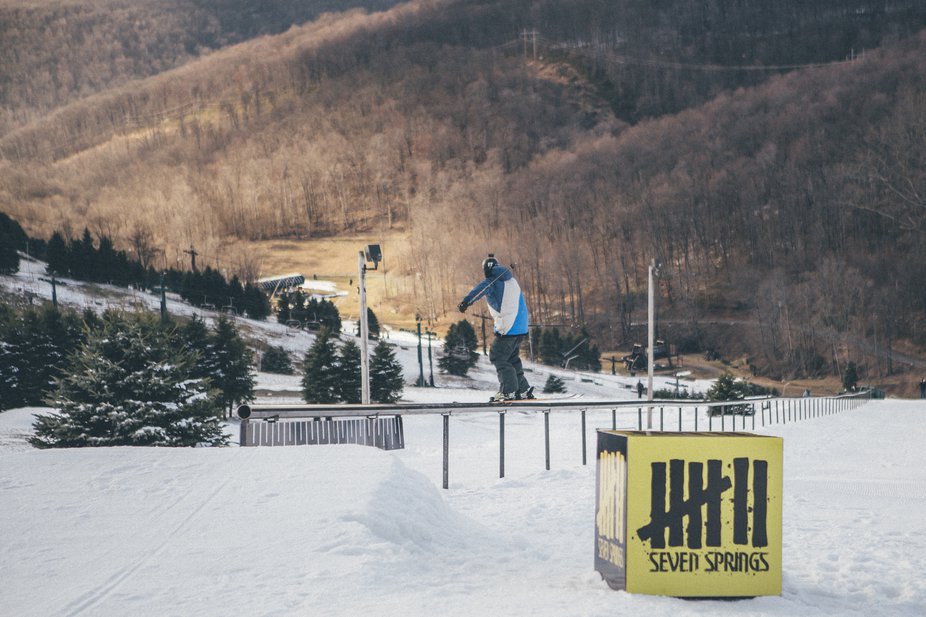
Record Breaker: Tom setting a world record railslide, of 424ft, in 2016.
Credit:Nick Martini/Stept Productions.
_
”Sometimes what’s going on in the parks today aren’t necessarily the hardest, most difficult or dangerous trick. I think you can definitely see more innovation, style and unique aspects of today’s type of skiing. You’ll never eliminate the fact that competitions are about seeing who’s best at a sport and everyone wants to do the hardest/coolest run. You’ll continue to see double-corks and triple-corks and whatever else. Also the grabs, the style and the landings, the rail technique or trick choice, there’s so much that could be brought in from the new wave, the new style of park skiing or whatever you want to call it. It’s always going to be a blend because everybody wants to win and the hardest tricks to do are the really flippy dangerous ones! I don’t care who you are, that’s the scariest thing to do. Not some really creative trick on a rail, which I love, but it’s definitely scarier and gnarlier to do a quad cork! I don’t think it’s that “cool” but it’s definitely the most dangerous thing! There’s no way around that.
"It’s a tough balance and a fine line, I think the judges do a really good job of rewarding creativity and progression. You see it in events, people like Kai Mohler doing pre-grabs off the lip going switch. All these things get rewarded, maybe they’re not the hardest technically but if you’re the first person to do something or to think of something, you will get rewarded. That creativity aspect is huge within the judging in freeski still, so I think we’re in a good place.”
You have to assume that injuries are part of a sport like this. It’s an extreme sport, you’re skiing every day, 150-200 days a year and skiing is inherently dangerous.”
“This is my second knee injury. I think I’ve just been fortunate over the years, the amount of injuries I’ve had and the amount of months of skiing I’ve missed over the last 10-12 years of skiing professionally has been pretty minimal, so I try to take it with a grain of salt, but it’s definitely frustrating. My entire motivation for rehab, recovery and doing all the monotonous exercises, stretching and all that stuff, is getting back on skis.
“The joy that skiing brings me, whether it’s in the park or urban or skiing pow it’s just worth going through that process. It’s been fun, it’s a learning experience and it generates a new set of motivations for me. I’ve been going six or seven months without skiing, you start watching videos, you start getting motivated to try something new when you get back out there. What are you going to do? How are you going to make the most of your time?
“For me, it’s been really good to just reset, refocus and get stronger so that this year I have new found motivation to go and do what I want to do and accomplish some new things. “
When someone who’s been right at the top of his profession, for over a decade, says he wants to accomplish some new things, that’s something all of us should be looking forward to.
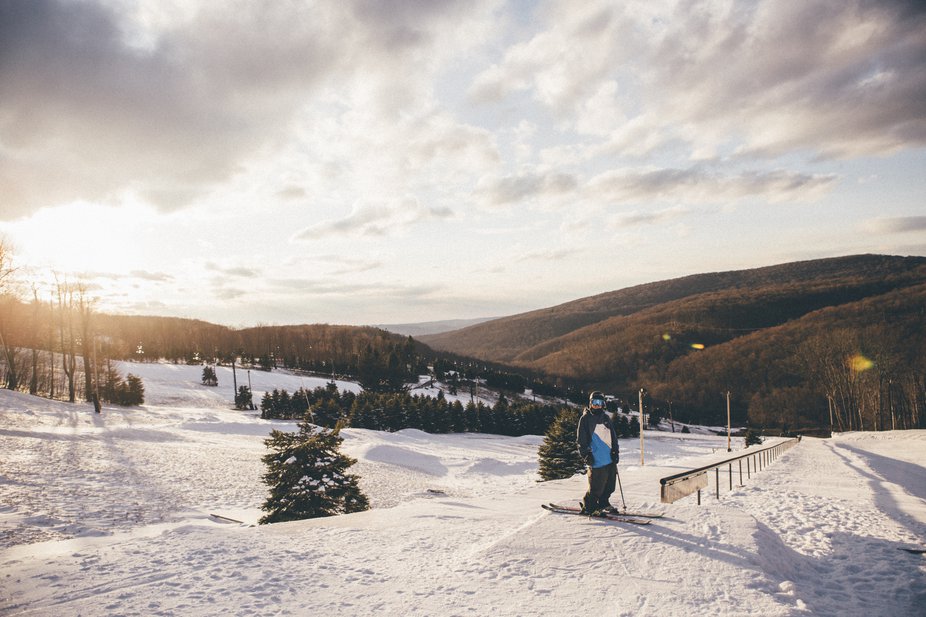
Credit: Nick Martini / Stept Productions
_
Tom’s favorite:
Trip: “I live out here in Park City and I love it, but I’ve got to say that Whistler’s one of my favorite places in the world. Just because of the town and the people. There are so many good Canadians! There’s tons of good backcountry sled-access and tons of good park skiing. It’s open, basically all year-round, with the glacier in the summer. The village is great, you can drink Caesars (a Canadian cocktail). Whistler’s great!”
Trick: “It’s hard to beat the classic backflip, as much as people try to. I think my first jump of the year, the first trick after a couple months of not doing anything, is just laying out a nice backflip.”
Track: “I’ve always been a huge Nas fan, I’ve been back into listening to Illmatic and Stillmatic. I’ll throw it back to the Superunknown video. We all use the beat from it, but the song Made You Look. That’s classic. We used the Biggie remix but I’ll choose the original.”

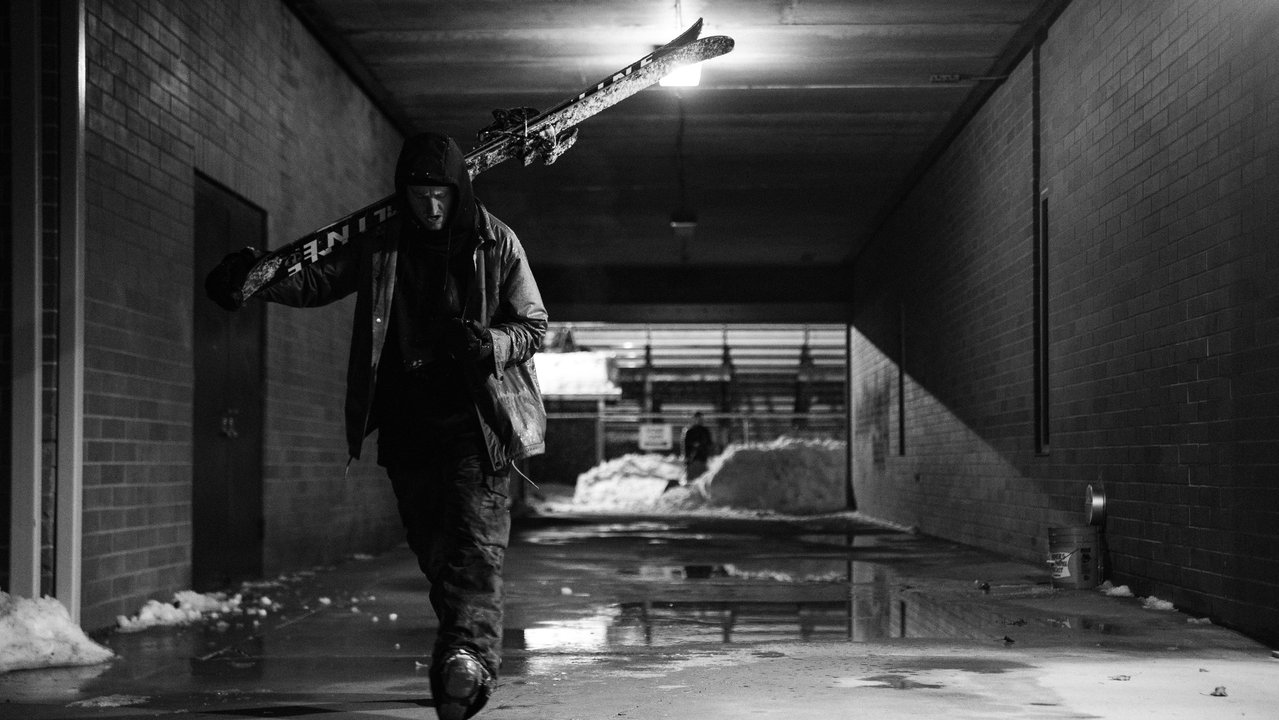
Comments